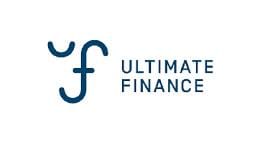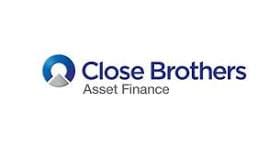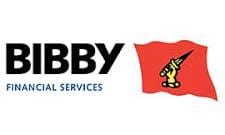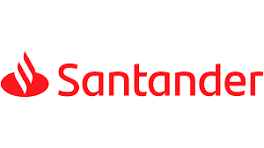What is Invoice Finance?
Invoice finance is a way for businesses to get quick access to cash that is tied up in their unpaid customer invoices. Instead of waiting weeks or months for clients to pay, a business can leverage the value of those invoices to receive a cash advance from a finance provider. This is a common solution for businesses that sell goods or services on credit to other businesses and have to manage the gap between paying their own bills and receiving payment from their customers.
The basis of how invoice finance works involves a business raising an invoice for a customer and then “assigning” (or selling) it to a finance provider. The provider will then advance a percentage of the invoice’s value, sometimes up to about 90%, within a short timeframe which can be as quick as 24 hours. The remaining balance is then released to the business once the customer pays the invoice in full, minus any fees and charges from the provider. Unlike a traditional loan, invoice finance is a way of unlocking the value of money that the business has already earned. It’s a funding solution that can grow in line with a business’s turnover, offering a specific flexibility against income that a standard loan can’t and eligibility will be based on slightly different criteria that can make it more accessible for some businesses.
The Two Main Types of Invoice Finance
There are two primary types of invoice finance: invoice factoring and invoice discounting. While both help with cash flow, they differ significantly in how they operate and who is responsible for collecting the payments.
Invoice Factoring
With invoice factoring, the finance provider takes on the responsibility of managing your sales ledger and collecting the payments directly from your customers. This can be a useful option for small to medium-sized businesses that don’t have the time, resources or in-house expertise to handle credit control themselves. By using a factoring service, they can free up staff to focus on core business activities, such as sales, service delivery or to support expansion. Your customers will be aware that you are using a factoring service because they will be paying the provider, not you, which some businesses are not comfortable with. This could be because of wanting more confidentiality for its own financial affairs away from the clients or to avoid the misconception that the set up is a sign of financial trouble (a third party managing income).
The provider essentially buys the debt from you, advances the agreed percentage and then handles all the communication and collection efforts. Once the customer pays the full invoice amount to the provider, the remaining balance is transferred to you, less their service fees and charges. The fee for factoring is often higher than discounting because it includes the additional service of sales ledger management and credit control.
Invoice Discounting
Invoice discounting is a more confidential form of invoice finance. In this scenario, the finance provider advances you a percentage of your invoice value but you remain responsible for collecting the payments from your customers. The relationship between you and your clients remains unchanged and your customers are not necessarily aware that you are using an invoice finance facility.
This option is often preferred by more established businesses that have a robust in-house finance team and want to maintain full control over their customer relationships and collection process. Since the provider is not handling the collections, the service fee is typically lower than that of factoring.
Why Businesses Use Invoice Finance
The need for invoice finance often comes down to cash flow. Late payments are a long-standing issue for many UK businesses and can find they are owed large sums in unpaid invoices at any one time. This can create a significant working capital gap, preventing a business from paying suppliers, covering wages or investing in new opportunities.
Invoice finance provides a solution to this problem by giving businesses almost immediate access to their cash. This can be a particularly useful tool for businesses that trade with larger organisations that have long payment terms as it allows them to take on bigger projects without the concern of a cash flow shortage. It’s also a way to secure funding without taking on traditional debt, as the finance is based on the value of a business’s outstanding invoices, not wholly on aspects such as history, turnover and assets.
A Look at Other Options and Context
While invoice finance is a powerful tool, it’s important to understand how it fits into the wider context of business funding. A traditional business loan, for example, provides a lump sum of cash that is repaid over a set period with interest. The application process can be more involved, often requiring proof of creditworthiness and collateral. Invoice finance, on the other hand, is a more flexible solution that grows with your sales and is based on the creditworthiness of your customers rather than your own business’s short-term financial performance.
Invoice finance can also be combined with other funding methods. For larger businesses, for instance, a solution called Asset Based Lending (ABL) is available. ABL can combine invoice finance with funding secured against other company assets such as property, stock or machinery to provide a higher level of working capital.
Ultimately, choosing the right finance option depends on a business’s specific needs, including its size, turnover and whether it has the internal resources to manage its own credit control. While invoice finance can be a great fit for many businesses, especially those in sectors such as recruitment, manufacturing or haulage it is always a good idea to consider all available options to make an informed decision.
Invoice Finance FAQs
Is invoice finance only for large businesses?
No. While invoice finance is used by large businesses, it is also a very useful funding option for small to medium-sized businesses. It can be a good fit for any businesses who provide goods or services on credit. Some providers may have minimum turnover requirements, but there are a number of options available to suit a wide range of business sizes and needs.
Is invoice finance the same as a traditional loan?
Invoice finance is different from a traditional, or standard, loan. With a loan you are borrowing a set amount of money and repaying it with interest over a fixed term. Invoice finance is a way of unlocking cash that you have already earned from your outstanding invoices and is therefore set up and repaid under a different structure.
Will my customers know I’m using invoice finance?
This depends on the type of invoice finance you choose. With invoice factoring, your customers will be aware because the finance provider will be collecting payments directly from them. However, with invoice discounting the service is confidential because your business maintains control of your credit control and customer relationships.
What happens if a customer doesn’t pay an invoice?
This can vary depending on the terms of your agreement. In many cases, if an invoice becomes disputed or a customer fails to pay, the invoice will be taken out of the finance programme and you will be responsible for settling the dispute with your customer and repaying the advance. Some providers do offer “bad debt protection” for an additional fee which can protect you from losses if a customer becomes insolvent.
How much does invoice finance cost?
The cost of invoice finance can vary depending on the provider and the type of service you choose. There are usually several charges including a service fee and interest on the amount you borrow. The fees for factoring are generally higher than for discounting because they include the cost of credit control services. It is important to carefully review all charges with a potential provider before committing to an agreement.





